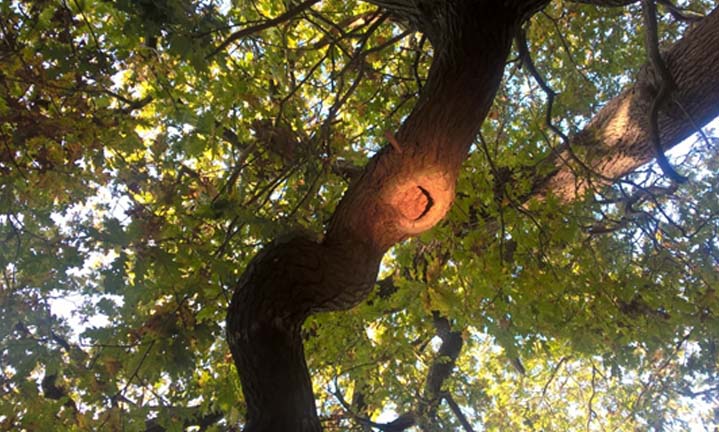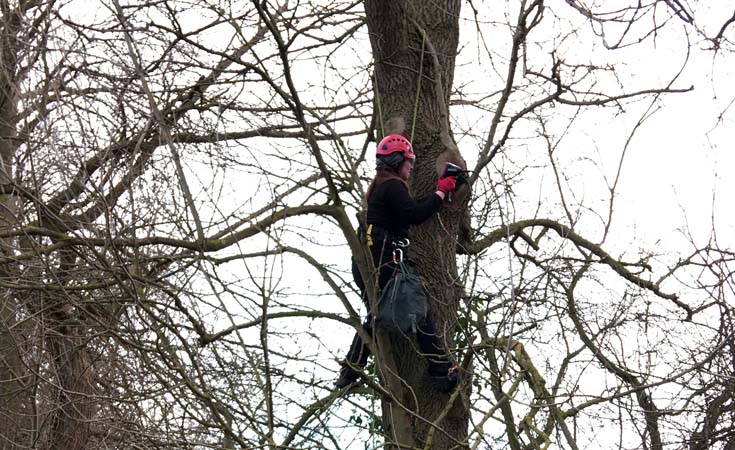Bats do not make the features they roost in but instead rely solely on features already present in the landscape. This includes buildings and trees. In fact, around three quarters of British bat species are known to roost in trees. So how does this pose a challenge for developments?
As we’re talking about trees, let’s linger in the canopy for a minute. Tree features potentially suitable for bats include woodpecker holes, cavities and splits in the trunk and branches of trees, as well as loose bark – to name a few.
Mature oak, ash, beech and willow trees are renowned for producing suitable roosting features for bats. However, all tree species (even surprisingly young and small specimens) can produce suitable roosting features as well. But how can you tell if bats are roosting in these features or not?
Preliminary Ground Level Roost Assessment
Feet firmly back on the ground, typically, the first phase of surveying trees for bats involves recording potential roosting features (PRFs) on trees – from ground level. This is conducted as part of a Preliminary Ground Level Roost Assessment (PGLRA).

Based on the PRFs recorded (among other things) the tree’s overall potential to support roosting bats is assessed. These are broken into three levels: low, medium and high. This generally translates into dusk emergence and/or dawn re-entry surveys to confirm the presence/ likely absence of roosting bats.
Although assessing trees from ground level is an effective bat survey technique due to the speed at which it can be undertaken, it has its limitations. For example, roosting features can appear suitable for bats from ground level, but upon closer inspection, they can be found to be unsuitable. This is where a new perspective is needed.
Tree climbing surveys
One such method Thomson are now undertaking are tree climbing surveys. These allow for a more detailed inspection of PRFs and they can be advantageous in detecting a bat roost over other methods, such as dusk emergence and dawn re-entry surveys.
They also allow for a more accurate assessment of a trees potential to support roosting bats over PGLRA’s, through ruling out unsuitable roosting features that would have otherwise been subject to further surveys. As tree climbing surveys can be undertaken at any time of year, this could help to avoid unnecessary delays and costs. However, it’s not a simple case of taking a nostalgic hoick up the trunk.
Tree climbing specialists

To conduct tree climbing surveys, developers will be required to employ tree climbing surveyors with a specific skill set. They will require qualifications in tree climbing, ecology and protected species licences to undertake the task. Surveyors use harnesses and ropes to climb high into the tree’s canopy to inspect (PRFs) individually. An endoscope and torch are then used to assess the PRFs and look for signs of bats.
How we can help
We have a team of qualified tree climbers (certified in NPTC Tree Climbing & Aerial Rescue) licensed by Natural England to survey for bats. Our expert guidance and resources in this area could turn your project around quicker and prevent unnecessary surveys.
As all UK bat species and their roosts are legally protected, it is important to consider if trees could be affected by your development. Get in touch today to discuss how tree climbing surveys could benefit your project.











